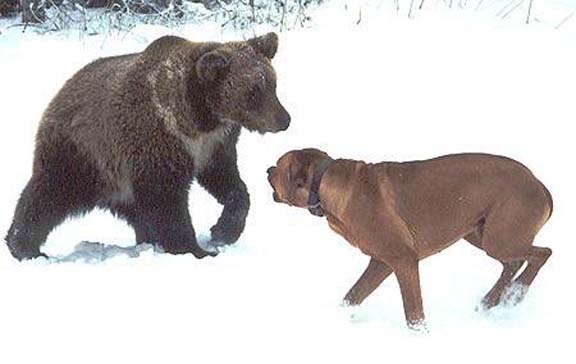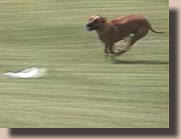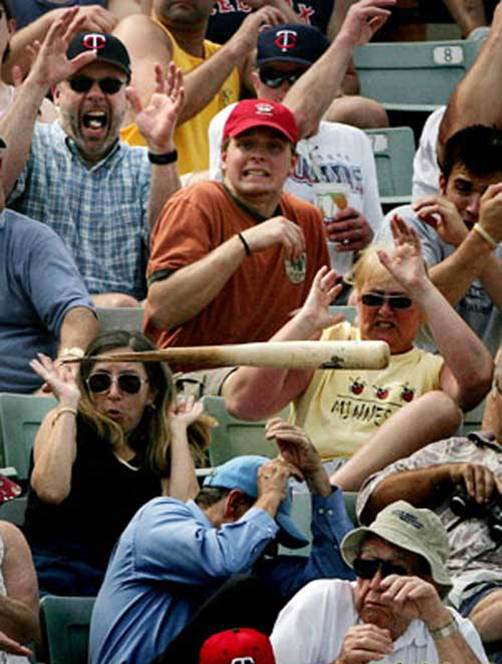A proper Ridgeback is a thing to behold. Mine shows just a hint of rib, and is absolutely ripped with muscles. They are short-haired so you can visually see the athletic capability. Ridgebacks are known to be able to jump 5-foot fences. Mine will leap like a Mexican jumping bean to give me a surprise kiss on the lips when I least expect it. It's annoying because I worry about him doing that to a child and knocking them over. But as long as I keep him on the leash or otherwise under control, his "flying kisses" aren't such a big deal.
The animals are low to the ground and strong. They were originally owned by the Hotentot tribe in South Africa, and used to protect the farm from wild African animals. Their modus operendum is never to bark unless there's REALLY something bad coming down. And when it does - such as a lion coming on the property - they work in packs to chase and harass the lion until the hunter or property owner can come with proper weapon(s) and get the job done. This ability to harass something like a lion can be seen in my Ridgeback the way he'll "slalom" a line of bushes on my property out of sheer joy of movement.
Ridgebacks aren't for the average owner. You need at least one strong male on the property to establish order. And you need to have the patience of Job to deal with their loving but stubborn nature.
One thing my dog (Maverick) would do in the beginning was jump and kiss when let out. If cooped up too long, he could be a bit out of control. This is where I suddenly discovered a use for a Uechi wauke. I kid you not.
While a Ridgeback won't lunge at your throat to bite you, the action of doing that or engaging in a reckless flying kiss can be somewhat similar. And then one day I just discovered a wonderful use for the wauke. As Maverick spontaneously jumped up at me, I would go out "flinch-like" with the arm in a shearing manner right at the neck. I could stop Maverick cold in the air, and then bring his body down to the ground with the completion of a circle.
Rory showed a number of us a shearing motion that looked very similar to a movement done in Seisan just before the jump back to crane posture. Seeing how Rory used that against bad guys and then seeing what just "happened" with me towards my loving but stubborn beast made me realize an offensive value for something we view as an "uke." Indeed uke doesn't mean to block; it means to receive. So if beast or man lunges at you, one certainly can "receive" them with flinching forearm to the neck. The contact can lead to any number of inside fighting grappling moves - from a neck lock to a whole-body dump.
Anyhow... I am thankful that Maverick's neck is so strong that he doesn't mind my "receiving" his kiss that way. He's learning... and so am I.
- Bill




